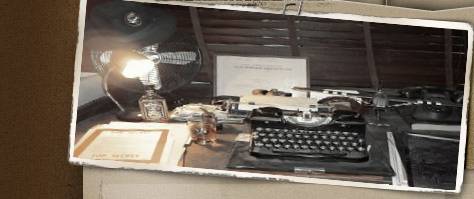|
"It struck the contemporary - who
had been unaware of Model's orders
and could, in general, not oversee
what had occurred at the battle in
Nijmegen at all- as a miracle that
the road bridge had not been blown
by the Germans and against this
backdrop, shortly after the events,
many people in Nijmegen were
inclined to assume that the traffic
bridge had been saved because of the
courageous actions of a twenty two
year old citizen of Nijmegen, Jan
Jozef Lambert van Hoof, who had
succeeded, so it was said, in
sabotaging the lines to the
explosive charges (these were
electrical lines and blasting wires
whose 'beginning point' was situated
in a casemate near the bridge’s ramp
in Lent). On the bridge a plaque was
revealed in 1946 on which Van Hoof,
who was awarded the Dutch Military
Willems Order medal posthumously,
was named the savior of the bridge.
Without a doubt Jan van Hoof had
been a young man with a strong urge
for action and with an honest
character. He had been an
enterprising scout, later became an
active member of the Dutch Union,
had escaped the German labor
conscription, had become a regular
distributor of various illegal
periodicals, had joined the
espionage group named Secret Service
Netherlands in the beginning of 1944
(he led a group of scouts in
Nijmegen), and had already offered
his services to the 82nd Airborne on
the 17th of September, he was shot
dead by the Germans on the afternoon
of September 19 when he rode along
on a British armored car, which
after the occupation of the main
post office of Nijmegen, had
penetrated deeper into the inner
city on its own, presumably to reach
a café from which, as Van Hoof
assumed, the Germans could blow the
railway bridge.
After the liberation, and especially
after the revealing of the plaque,
Nijmegen became divided into two
sides: some maintained that Van Hoof
had in fact been the savior of the
large road bridge, others claimed to
consider it impossible that anybody
could have managed to penetrate
through to the explosive lines. In
order to obtain more certainty the
Minister of War at the time created
a committee of five retired
generals: J.J. G. baron van Voorst
tot Voorst (chairman), W.F. Sillevis,
J. Zwart, H. Koot and D.A. Hilten.
The committee questioned seventy one
people, almost all of them under
oath, and obtained written
statements of an additional fifty
nine people. It filed its report in
November 1951.
The committee considered it a fact
that the road bridge at Nijmegen had
remained intact as a result of
Model’s decision. But if one assumes
that Model had changed his decision
in time, could the demolition of the
bridge have been prevented by the
sabotage acts of Jan van Hoof?
Concerning his activities relating
to this sabotage, the committee
determined:
- that Van Hoof and his group of
scouts had made great efforts in
finding out how the Germans had
prepared the demolition of the
railway bridge and the (much more
vital) road bridge across the Waal
river;
- that he had decided to prevent
this demolition personally;
- that in the first half of
September 1944, he had received, on
his own request, the official
mission from the OD- [resistance;
battledetective.com] officials in
Nijmegen to, if possible, save the
road bridge;
- that on Monday morning September
18th (the morning when an American
company had tried to reach the
bridge) at approximately eleven
o'clock he had left the house of his
parents, wearing brown coveralls and
that he had returned there at
approximately two o’clock in the
afternoon, tired and dirty.
Subsequently he had told eleven
people that one no longer had to
fear that the bridge would be blown
– on the other hand he had not
reported anything about this when
he, on Tuesday, before his last and
fatal ride, participated in a
conference with American officers
that had the Waal river bridge as
the main topic. Had he succeeded in
getting under the bridge's road deck
and cut the lines there, while the
attention of the bridge's guards was
focused on combat around it? The
committee who had studied the
situation on the spot, did not reach
a unanimous verdict: van Hilten
doubted it, the other four generals
were convinced with a "probability,
bordering certainty".
If one follows the conviction of the
largest possible majority of the
committee, it still remains a fact
that the road bridge was not saved
because of that act of sabotage. The
committee referred to Model's order
– and also to some clues that the
Germans had discovered that the
lines were sabotaged and that the
damage had been repaired." |













